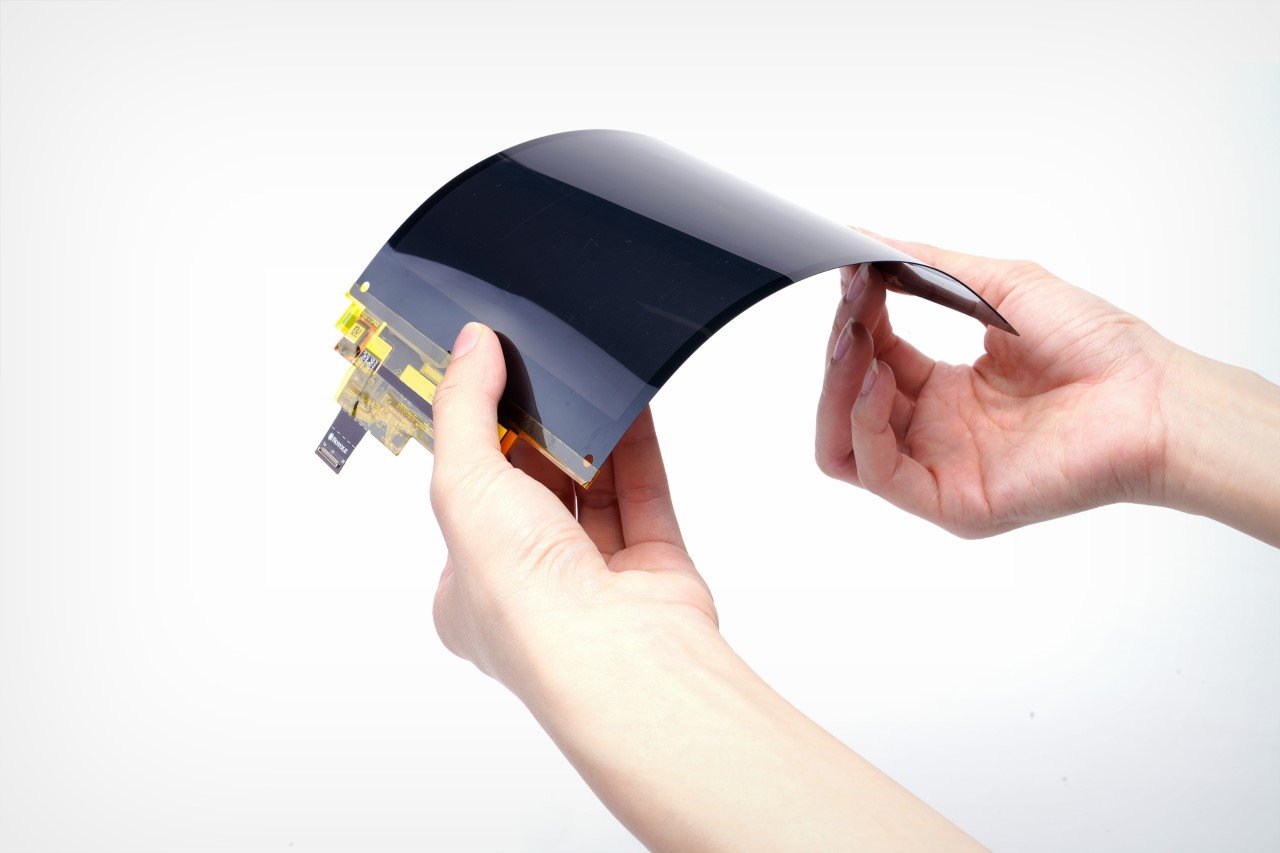- 1 Understanding Flexible Display Panels
- 2 Key Materials Behind Flexible Displays
- 3 Types of Flexible Displays
- 4 How Flexible Displays Differ from Conventional Displays
- 5 Advantages of Flexible Display Panels
- 6 Limitations and Challenges
- 7 Applications of Flexible Display Panels
- 8 1. Consumer Electronics
- 9 2. Automotive Industry
- 10 3. Industrial and Commercial Use
- 11 4. Future Concepts
- 12 The Future of Flexible Display Technology
- 13 Conclusion
Understanding Flexible Display Panels
A flexible display panel is a type of electronic display that can be bent, folded, or rolled while still showing content clearly. Unlike traditional LCDs or OLEDs that rely on rigid glass substrates, flexible displays are built on plastic, metal foil, or ultra-thin glass.
This flexibility makes them lighter, more durable, and adaptable to unique form factors. The most widely used flexible display technology today is OLED (Organic Light-Emitting Diode), which naturally allows for thinner and bendable structures compared to LCD technology.
Key Materials Behind Flexible Displays
The ability of a display to flex without breaking relies on the substrates and encapsulation layers used:
- Plastic substrates (polyimide, PET, PEN): These replace traditional glass and allow bending.
- Ultra-thin glass: Provides flexibility while maintaining scratch resistance.
- Thin-film transistors (TFTs): Used for pixel control, redesigned to be compatible with flexible materials.
- Barrier layers: Prevent oxygen and moisture from damaging sensitive OLED materials.
By carefully layering these components, manufacturers create a display that is both functional and physically adaptable.
Types of Flexible Displays
Flexible display panels are categorized by how they deform and recover:
- Bendable Displays: Can be bent to a certain radius but not folded repeatedly.
- Foldable Displays: Designed to fold in half or multiple times (e.g., foldable smartphones).
- Rollable Displays: Extend and retract like a scroll, useful for TVs and monitors.
- Stretchable Displays: An emerging category that can expand and contract like elastic material.
Each type requires specific engineering considerations regarding durability, pixel density, and power consumption.
How Flexible Displays Differ from Conventional Displays
| Caratteristica | Conventional Display | Flexible Display |
|---|---|---|
| Substrate | Glass | Plastic or ultra-thin glass |
| Durata | Fragile, prone to shattering | Resistant to drops and impacts |
| Form Factor | Fixed, rigid | Foldable, rollable, bendable |
| Thickness | Typically >1 mm | <0.5 mm in many designs |
| Peso | Heavier | Leggero |
| Applicazioni | TVs, monitors, rigid smartphones | Foldable phones, wearables, automotive dashboards |
The main difference lies in design freedom. Flexible displays allow manufacturers to explore entirely new device categories.
Advantages of Flexible Display Panels
Flexible displays are not just a design gimmick—they offer tangible benefits:
- Durability: Less prone to cracking compared to rigid glass-based panels.
- Portability: Devices can fold or roll into smaller, pocket-sized forms.
- Lightweight construction: Plastic substrates reduce overall weight.
- Energy efficiency: OLED-based flexible displays can consume less power.
- Innovative product design: Enables curved screens, foldable phones, and futuristic wearables.
Limitations and Challenges
Despite their promise, flexible displays face several challenges:
- Durability under repeated folding: Mechanical stress can cause creasing.
- Manufacturing complexity: Higher costs compared to traditional LCDs.
- Material limitations: Flexible plastics may scratch more easily.
- Longevity: OLED flexible displays can face burn-in or reduced lifespan if not properly engineered.
These challenges are actively being addressed, but they remain barriers to mainstream adoption in some industries.
Applications of Flexible Display Panels
Flexible display panels are already changing product design across multiple industries:
1. Consumer Electronics
- Foldable smartphones (e.g., Samsung Galaxy Z Fold series, Huawei Mate X)
- Wearable devices like smartwatches and fitness trackers
- Tablets and laptops with hybrid folding screens
2. Automotive Industry
- Curved dashboards and infotainment systems
- Seamless integration into vehicle interiors
- Head-up displays (HUDs) with adaptable form factors
3. Industrial and Commercial Use
- Portable medical monitors
- Flexible retail signage
- Ruggedized displays for outdoor environments
4. Future Concepts
- Rollable TVs that retract when not in use
- Stretchable medical patches with integrated display elements
- Smart clothing with embedded displays
The Future of Flexible Display Technology
The market for flexible displays is projected to grow rapidly as manufacturing techniques improve and costs decline. According to industry reports, the flexible display market could exceed USD 100 billion by 2030, driven by demand in smartphones, automotive, and wearable sectors.
Advancements to watch for include:
- Stronger flexible glass to reduce scratching
- Improved folding mechanisms to prevent creasing
- Display ibridi combining flexibility with high durability
- Integration with emerging technologies like AR/VR and IoT
Conclusione
So, what is a flexible display panel? It’s more than just a futuristic gadget feature—it represents a fundamental shift in display technology. By replacing rigid glass with flexible substrates, manufacturers unlock entirely new possibilities for design, portability, and durability.
Da foldable smartphones a wearable healthcare devices e automotive dashboards, flexible displays are already making an impact, with even more transformative applications on the horizon.
While challenges like cost and durability remain, the industry is steadily advancing. Flexible display panels are not just a trend—they are set to become a core component of next-generation electronics.














